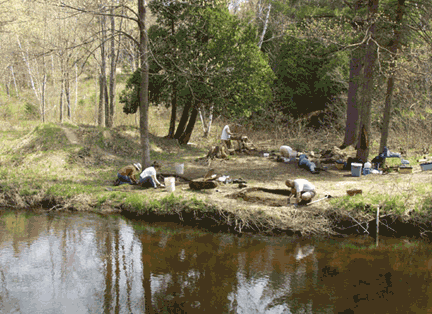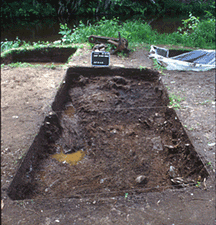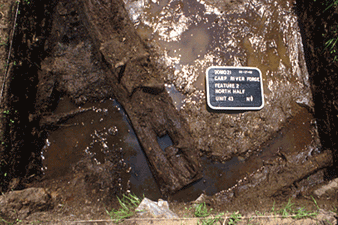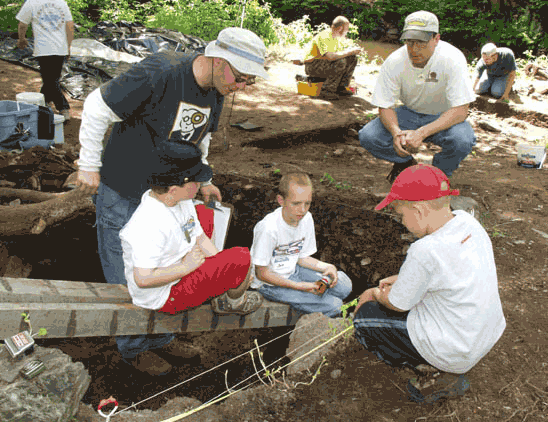Carp River Forge 2002 Field School

During the 2002 field season, Dr. Patrick Martin and Dr. Timothy Scarlett directed Michigan Technological University's fourth field school at the Carp River Forge, a mid-nineteenth century bloomery forge located on the grounds of the Michigan Iron Industry Museum in Negaunee, Michigan. Students documented the remains of the bloomery hearths and a blacksmith hearth, the dam base, and the residential area. Prior sessions focused on surveying the site and investigating the extent and character of industrial and domestic remains. Documentary and archaeological evidence indicated that the forge operated for approximately eight years using the American Bloomery Process. Students also found evidence of on-site charcoaling, an ore roasting kiln, and parts of the blowing equipment. Excavations revealed structural timbers associated with cribbing visible along the riverbank. Theses based on the three field seasons can be found in the J. Robert Van Pelt Library at MTU. A summary of these works and additional archaeometallurgical research will appear in IA, The Journal of the Society for Industrial Archeology in a forthcoming article by David Landon.


The 2002 Field School focused on the industrial area of the site. Graduate student Tim Mancl supervised the excavation of five 2x2meter units on the "island," and one unit on the west side of the river. Students also worked with Dr. Scarlett on a survey of prospecting pits near the site, during which they found additional features possibly associated with the site. Graduate student Larry Mishkar reconstructed the shooting location of historic photographs.



Local children visited the site as part of school field trips, and participated in work as part of the museum's Archaeology Day.
Excavation on the island revealed additional
structural timbers, and evidence of smelting activities. The most
significant find was a mass of conglomerated slag that extended
into four of the units. Preliminary study of the slag collected
has shown that the mass contained a variety of slag and ore types,
structural artifacts, and a possible crop end of an iron bar.
In the coming months, investigation of the slag and ore collected
during the 2002 field season will continue in hopes of discovering
further information about forge operations.
Start | Program | Application
Information | SIA
Projects | Field
School | Social Science Department






